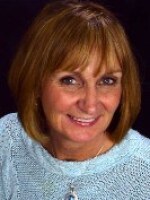Students at Mount Carmel High aim high, about 100,000 feet straight up. Recently, the Amateur Radio Club at the school launched a helium balloon into near-space. The balloon was tied to the student's spacecraft: a small styrofoam box equipped with sensors to track data as well as tiny video cameras and a still camera to record the journey. The students named the craft Icarus-1.
Lindsay White, a sophomore, is the club’s president.
“What we did that was unique in this launch was we had pictures being sent down live to anyone who had the right decoding software. That really hasn’t been tried on many other balloon launches,” she said.
It was a team effort to put the project together. Tim Kinsey, a senior, said they launched the balloon on a Saturday morning at the school. They used all the helium they had to give the nylon balloon its 8 pounds of lift. Club member Alex Kim worked on the antenna with two of the mentor engineers.
‘We were trying to find the point where the feedback would be lowest. Once we found it, we soldered the wires together and it worked,” he said.
Senior Kellen O’Connell described the mission as “an awesome success.” He said that the temperature sensors recorded minus 55 degrees Celsius outside the styrofoam box, while on the inside, it was room temperature.
The flight lasted for 2 hours and 45 minutes. It landed in the desert about five miles east of the Ocotillo Wells airstrip where two bikers found it.
The bikers were alerted when the area was buzzed by two fighter jets that flew 200 feet above the ground while the orange parachuted payload drifted down. Jonathan Perez, also a senior, said his only regret was that they didn't get footage of the last five minutes when the craft hit the earth.
The students obeyed all FAA rules under the tutelage of John Earnest, the buoyant science teacher who oversaw the project and kept it aloft.
“My students got experience in an engineering project. You bring everybody’s sandbox, where everything works fine. You bring it all together and problems start happening. It was a wonderful experience to see the problems with system integration. It’s something that never happens in a science class in high school,” he said.
“In high school," he added, "everything is nice and perfect and doesn’t exist in the real world. My students got to see what happens when you try to bring a whole bunch of different systems together and make them all function. And that’s what our mentors did, they showed them the problems, but they also showed them all of the fun!”
The mentors include Phil Karn, Jim McLaughlin, Dave White, Gene Sweick, and John Belstner. They work at companies like Qulacomm and Boeing. Teacher John Earnest said that the mentors pushed the students far beyond their current capabilities, then backed them up with knowledge as they grew in experience.
Short term, the students are planning to launch balloons again this semester without the aid of their mentors. Long term, their goal is to build a compact satellite and send it into space by hitching it a ride on a rocket.







